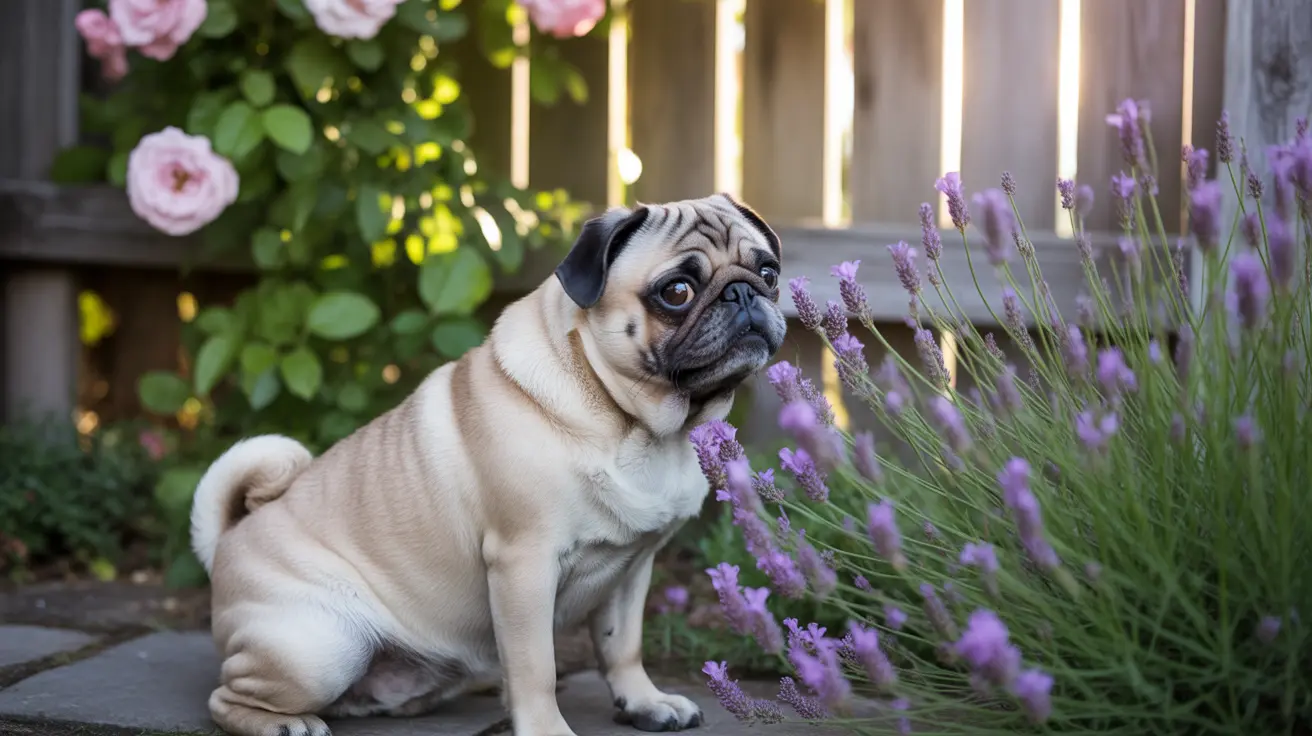If your dog has eaten lavender plant material, you're right to be concerned. While lavender isn't among the most toxic plants for dogs, it can cause various symptoms ranging from mild discomfort to more serious issues, depending on the amount consumed and the form of exposure. This comprehensive guide will help you understand the risks, recognize symptoms, and know exactly what steps to take if your dog has eaten lavender.
Understanding Lavender's Effects on Dogs
Lavender plants contain compounds called linalool and linalyl acetate, which can be toxic to dogs in sufficient quantities. While most cases of dogs eating small amounts of lavender plant material result in minimal issues, larger quantities can lead to concerning symptoms and may require veterinary attention.
Mild vs. Severe Exposure
The severity of symptoms typically depends on how much lavender your dog has consumed. Small amounts might cause minor digestive upset, while larger quantities could lead to more serious complications. The form of lavender also matters - essential oils are far more concentrated and dangerous than the plant itself.
Common Symptoms to Watch For
Immediate Signs
- Vomiting
- Diarrhea
- Loss of appetite
- Excessive drooling
- Pawing at the mouth
Secondary Symptoms
- Lethargy
- Weakness
- Abdominal discomfort
- Changes in behavior
- Difficulty passing stool
What to Do If Your Dog Ate Lavender
Immediate Steps
If you catch your dog in the act or shortly after eating lavender:
- Remove any remaining plant material
- Note how much was consumed (if possible)
- Monitor your dog closely
- Contact your veterinarian for guidance
When to Seek Emergency Care
Seek immediate veterinary attention if your dog shows:
- Severe vomiting or diarrhea
- Difficulty breathing
- Unusual lethargy
- Signs of pain or distress
- Tremors or seizures
The Special Danger of Lavender Essential Oils
Lavender essential oils pose a significantly higher risk than the plant itself. These concentrated oils can cause severe reactions through ingestion, skin contact, or inhalation. Even small amounts can lead to serious symptoms including chemical burns, respiratory issues, and nervous system effects.
Prevention and Safety Tips
In the Garden
- Keep lavender plants fenced off or out of reach
- Supervise dogs in areas with lavender
- Consider removing lavender plants if your dog shows interest in eating them
In the Home
- Store essential oils securely
- Never apply lavender oil directly to your dog
- Use pet-safe lavender products only under veterinary guidance
Frequently Asked Questions
What should I do if my dog ate a lavender plant?
Remove any remaining plant material, monitor your dog for symptoms, and contact your veterinarian for guidance. Don't induce vomiting unless specifically instructed by a professional.
Is lavender safe for dogs to eat or be around?
While not highly toxic, lavender can cause mild to moderate symptoms if eaten. The plant form is generally safer than essential oils, but neither should be intentionally given to dogs.
What symptoms indicate lavender poisoning in dogs?
Common symptoms include vomiting, diarrhea, loss of appetite, lethargy, and abdominal discomfort. More severe cases may show tremors, difficulty breathing, or nervous system effects.
How dangerous are lavender essential oils to dogs compared to the plant?
Essential oils are significantly more dangerous than the plant itself due to their concentrated nature. They can cause severe reactions through ingestion, skin contact, or inhalation.
Can lavender help calm dogs, and is it safe to use around them?
While some studies suggest lavender's scent may have calming effects, any use should be carefully monitored and discussed with a veterinarian. Only use pet-specific products designed for dogs.
Remember, when in doubt about your dog's exposure to lavender in any form, it's always better to err on the side of caution and contact your veterinarian for professional advice.






